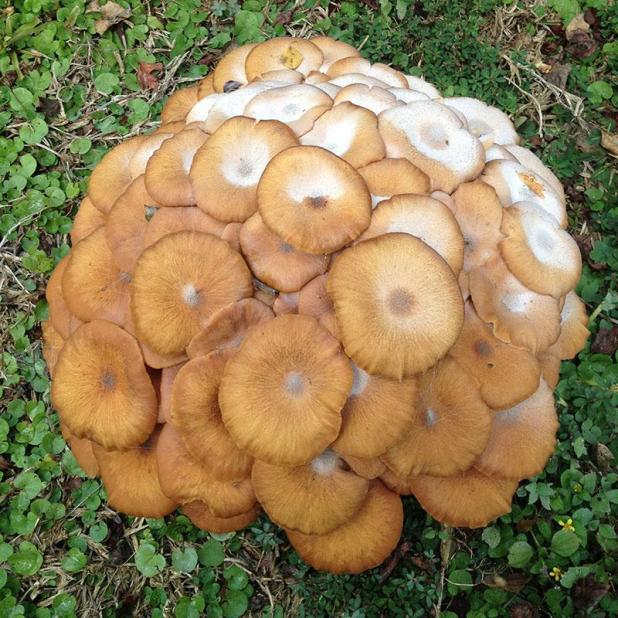
A cluster of honey-colored mushrooms produced by Armillaria tabescens. (Photo by Raj Singh, LSU AgCenter.)
End-of-the-year considerations for La. gardeners
There seems to be a trend in progression amongst gardeners.
It starts with the desire to purchase an easy vegetable plant for the back patio, then after a successful first harvest, the hook is set.
One vegetable plant turns to several the next season. After the second successful harvest, new gardeners start looking at their yard for the perfect place to start a small crop and incorporating other vegetables into their layout.
As the garden grows in the following years and different vegetables are used, many people wish to plant a few fruit trees for a variety of homegrown goods. When you get to the “home orchard stage” of gardening, don’t let an unseen threat spoil your harvest dreams.
Armillaria root rot is a fatal disease that plagues several varieties of fruit trees. Armillaria can live in the soil for decades amongst decaying organic matter. Some fruit trees are more susceptible than others such as peach, apple and avocado to name a few.
When selecting trees to plant, try to choose those that are more resistant to root rot such as persimmon, plum and fig. Armillaria thrives in wet low-lying areas so planting new trees in a high well drained location is a must.
One of the greatest tips that another county agent shared for avoiding root rot is to build up little mounds or a ridge when planting your trees. This will help drain the soil and avoid oversaturation of the roots.
If you already planted your fruit trees, keep an eye out for signs and symptoms. Trees can be infected for years before showing any symptoms.
One of the first signs is leaf wilting or curling. Next you will most likely see branch dieback in random sections of your tree. Take a close look at the trunk, you may also notice cankers or deep cracks in the bark.
Perhaps the most telltale sign is the appearance of Armillaria mushrooms at the base of your tree. These reddish-brown mushrooms will be clustered and pop up during the wetter fall or winter months.
If you suspect Armillaria root rot, a county agent can come out to confirm. Because there are no treatment options, it is best to remove the tree and all roots to prevent further transmission.
For more information on Armillaria root rot, visit the LSU AgCenter’s website or stop by the office at 157 Cherokee Drive in Crowley.
